iPhone vs Android: Who is the Winner?

Deciding between iOS/iPhone and Android for your next smartphone purchase can seem like a daunting task. On the one hand, Apple’s iOS is renowned for its ease of use and intuitive design, while Android is known for its varied range of devices and customization options. In this blog post, we’ll take a look at the advantages and disadvantages of each operating system to help you make your decision.
iPhone vs android is not a question as much as a discussion. The comparison between iPhone and Android is endlessly debated. Here neither iPhone nor Android wins, but there are different fields in which they both have their pros and cons. So now how do we choose what to buy or which is better between Apple’s iOS and Google’s Android? Well, we have tried here to help you with this problem and we hope this article helps. If it does, then please subscribe to us for future tech news and offers.
iOS and Android or Apple vs android?
Well, if we are about to compare them, then first we should be clear about the terms. iOS is the operating system of Apple’s iPhones, while Android is the Linux-based operating system of Google. As Android is an open-source operating system, most brands use it. This also makes Android more flexible, as you can change and customize everything from top to bottom, while iOS is more easy-to-use but rigid. You can’t easily download or customize your iPhone through third-party apps, but this also means the choices already given are simple and elegant.
We will compare the latest versions of both: iOS 16 and Android 13. One more thing to note is that iOS is only used by Apple and they only make iPhones, while Android is open and free to use and is thus used by multiple brands, so the Android phones are more numerous, which can also mean that in this comparison we will compare iOS with many different Android phones. Remember, we are not comparing iPhones with Samsung or Google, but iOS with Android and so iPhone with Android phones.
Which is the better operating system: iOS vs Android?
Looks and appearance
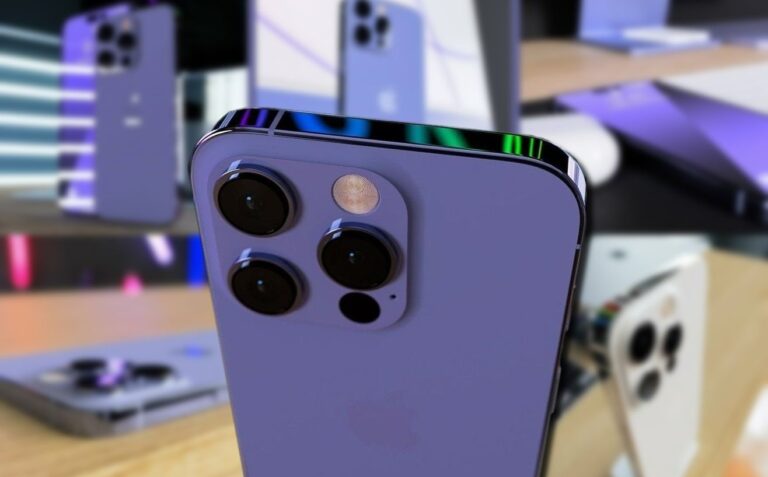
Well as hard as it sounds, looks do matter, at least in the case of smartphones. As phones have become a part of our outfits, they also need to match our expectations. Companies use various designs and colors to make their device different and beautiful, but hey you can’t just put makeup on phones (jk). So they use different styles, materials, shades, and designs to make it look as spectacular as possible.
Now iPhones are elegant and look good and there is no doubt that their design looks premium. No doubt that Apple has done a fantastic job of designing this masterpiece. They look spectacular and give a whole different vibe of a luxury than Apple fans wanted especially at that price. The small bezels, shining aluminum back, and beautiful retina display. That mixes and makes it look eye-catching.
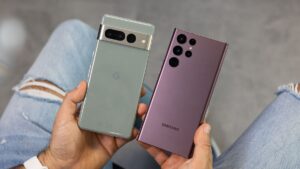
But the question here is what if someone wants a unique or a different design? Well here comes Android phones. With so many options for different brands to launch their own unique and different designs. While some can be less attractive or ugly but some are just elegant.
From color choices to designs to camera bump to screen bezels, you can choose what you want as the look and feel of the iPhone as well as many premium android phones feel the same. It is obvious that you can’t compare cheap budget phones to iPhones. But phones like the Samsung Galaxy S22 ultra or Google Pixel 6 Pro or 7 Pro can definitely be compared to iPhone.
As iOS devices are only manufactured by Apple, appearance becomes the sole responsibility of Apple whereas in the Android case, it is divided into many companies. Though Apple has done a fantastic job on the appearance of the iPhone and they sure look elegant and mesmerizing at the same time, then again we saw that the designs of the iPhone 13 pro max and 14 Plus are the same and even the 14 Pro only has one difference of dynamic island. At times like these, Android options look better to switch to in case Apple can’t innovate the design.
Point: Both
Ease of Use
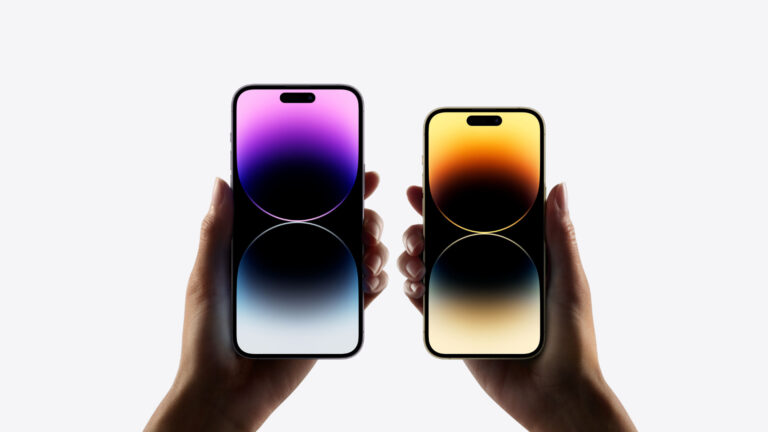
There are many people out there (Apple fans) claiming that iPhone is very easy to use compared to Android. So I can say for a fact that this is not ‘True’. When we see the usability or which is easy to use, we have to compare the latest versions.
When the first iPhone was released, its competitors in the market were the Windows Phone and Nokia Symbian phones and we all know what a mess they were. Even emerging tech users could not understand that mess. But now we have Android 13 and all those who have used the newer versions of Android know that the scenario is completely different. Android is also easy to use like iPhone. To be honest, the hard part is switching. If you are an iOS user then you might have to adjust to Android and the same goes the other way.
Another generalization is that Android has much better task-to-task navigation possibilities than iOS does. This issue is worsening in iPhones. They attempted to provide some navigation options, but they are awkward and strange. Additionally, they attempted the swipe navigation, which is awkward and difficult to use because iOS does not offer the option to switch on a home, back, or app tile. I mean a simple option to add a navigation bar is not too much to ask but just thing android users are familiar with.
To conclude, I think cheap android phones are not easy to use due to their own brand OS that makes them more sophisticated, but all the premium phones like Google Pixel and Samsung galaxy are definitely easy to use and if not more than at least at par with iPhone. So android is comfortable to use but iOS is neater and quick.
Point-Tie
Security & Privacy
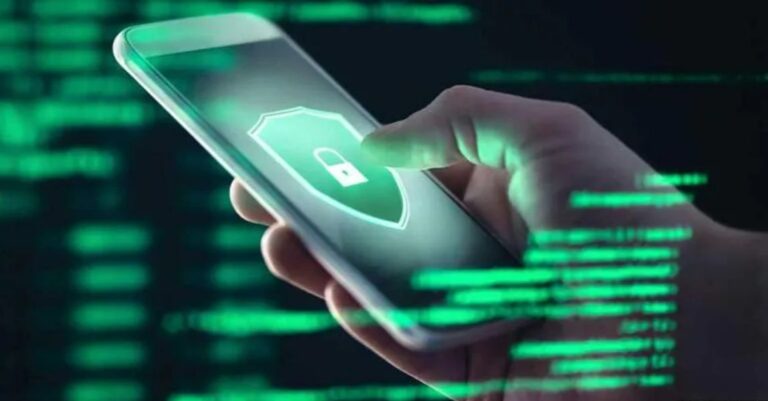
iOS offers users a more intuitive user experience and a greater security level than Android. As a result, many tech enthusiasts favor Apple’s iOS more than android phones in terms of security. Even when it comes to downloading apps, iOS has only one source, the Apple app store to download apps while in Android, you can download from other app stores than the Google play store. Also, App Store has a more strict set of policies for apps than the Play Store making it further safer.
iOS is known for its strong security features, which are built into the operating system. Apple has a strict review process for apps that are available in the App Store, and they also use encryption to protect user data. In addition, iOS devices are designed to prevent unauthorized access to data and prevent malware from being installed on the device.
Android, on the other hand, is an open-source operating system, which means that anyone can access the code and make changes to it. This can make it more vulnerable to security threats, as it is easier for hackers to find and exploit vulnerabilities in the code. In addition, the Google Play Store has a less stringent review process for apps, which means that there are more potentially harmful apps available for Android devices.
Overall, both iOS and Android have their security strengths and weaknesses. iOS is known for its strong security features, but Android’s open-source nature makes it more vulnerable to security threats. Users need to be aware of these differences and take steps to protect their devices and data, regardless of which operating system they are using.
Point: iOS
Customization
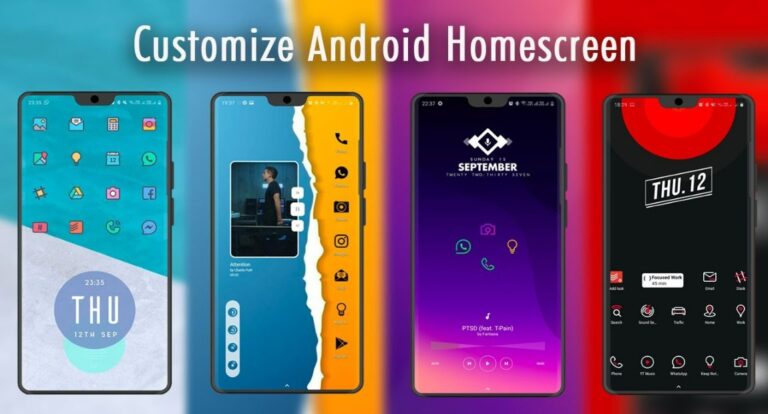
Android offers more customization options than iOS, allowing users to personalize their devices in ways not possible with Apple devices. This provides users the ability to tailor their devices to suit their specific needs and interests, something not available with Apple devices. With the increased flexibility, Android has become increasingly popular among users looking for a unique operating system experience.
Android devices typically have more customization options than iOS devices, allowing users to change their settings and interface to their preferences. This includes the ability to add and remove icons, customize the home screen, change the theme and manage default applications. Additionally, Android users can access third-party app stores, giving them access to a much wider selection of applications and games than iPhone users though it is recommended to use only legit sites. Furthermore, Android users have access to more advanced features such as themes with live wallpapers and extensive gesture controls.
iOS devices also have some level of customization available, such as the ability to rearrange app icons and create folders. Now you might be thinking that’s not customization or is that all? I have one thing to say, you are right. Apple does not offer nearly as much customization as Android does. iPhone always lacked the flexibility that Android gave. This may have made iPhone unique and secure, but in the changing times, where phones have become a part of the lifestyle, we would want to style our phones in the way we want. Android devices offer more control over app settings and many more options when it comes to personalizing a device.
But when it comes to ease of use, I think flexibility or options to customize easily is also different. Smartphones have now become an all-in-one tool that is present in everybody’s pocket. We use it so much that it becomes an integral part of life. Well, then I personally think that we should be able to customize them to the very last detail. Android gives us this flexibility while iOS is a bit rigid. So for people who like to customize it according to our likes, you will find it easier on Android.
Point: Android
Price

When it comes to price, there are a few key differences between iOS and Android. Generally speaking, iOS devices tend to be more expensive than Android devices. This is because iOS devices are typically manufactured by Apple, while Android devices are made by a variety of different manufacturers, including Samsung, Huawei, and LG which makes them more competitive.
One reason why iOS devices are often more expensive is that they are designed to be premium devices, with high-quality materials and top-of-the-line features. Android devices, on the other hand, are available at a wider range of price points, from budget-friendly options to high-end devices.
Another factor that can affect the price of iOS and Android devices is the operating system itself. Because Apple controls the iOS operating system and only licenses it to its own devices, it can charge a premium for its use. In contrast, Android is an open-source operating system, which means it is freely available to any manufacturer that wants to use it, which can help to drive down the price of Android devices.
Overall, the price of iOS and Android devices can vary depending on several factors, including the manufacturer, the features, and the operating system. While iOS devices tend to be more expensive, there are also many high-quality and affordable Android devices on the market. In my personal opinion, I think Apple definitely keeps the price of the products high enough to make them look like status symbols. Nearly 90% of iPhone owners don’t know if they really require a Pro or even an iPhone but they still have it. This is because, through time, Apple has become a symbol of fake richness and people like to show the Apple logo more than their faces. This is the main reason for iPhones being expensive.
So if you are not in these systems of a fake show-off and you want a phone worth the price, I would suggest you check the premium android phones as their price is a bit more reasonable to the features and functions.
Point: Android
Software Updates
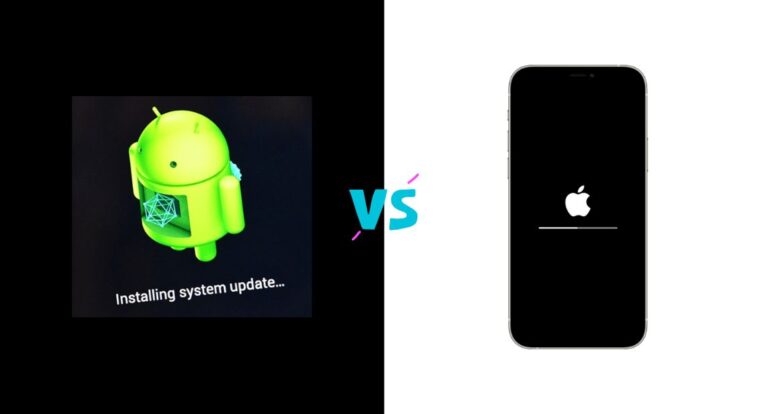
Software Updates refer to the availability and frequency of software updates we receive from a device running iOS or Android. In general, iOS devices tend to receive software updates more regularly and for a longer period than Android devices.
One reason for this is that Apple controls both the hardware and software of its devices, while Android devices are made by a variety of manufacturers, each with its software and hardware. This means that Apple can roll out software updates to all iOS devices at the same time, while updates for Android devices may be released at different times, depending on the manufacturer.
Another reason is that Apple is known for prioritizing security and user experience, and regularly releases software updates to fix bugs and improve the performance of its devices. Android, on the other hand, is known for having a fragmented ecosystem, with some devices receiving regular updates and others falling behind.
In terms of the length of time that devices receive software updates, earlier iOS devices tended to receive updates for several years after their release, while many Android devices only receive updates for a year or two. This means that iOS devices were more likely to receive the latest features and security updates for a longer period. This has changed now, as premium android phone makers also started giving 4-5 years of update guarantee making them a bit future-proof. Samsung galaxy gets 4 years of updates while Pixel gets 5 years as compared to Apple assuring updates for 6 years.
Overall, the availability and frequency of software updates are important factors to consider when choosing between iOS and Android. iOS devices tend to receive regular and timely updates, while the availability of updates for Android devices can vary depending on the manufacturer and the specific device though it has been improving continuously.
Point: Apple
Voice Assistant and AI

In general, both iOS and Android have their own AI and voice assistant capabilities, but there are some key differences between the two.
One difference is the availability of AI and voice assistant capabilities on iOS and Android devices. On iOS, all devices come with Siri, Apple’s AI and voice assistant, pre-installed. This means that users can access Siri’s capabilities on any iOS device without having to download or install anything.
Android, on the other hand, does not necessarily have a default AI and voice assistant. Instead, users can choose from a variety of AI and voice assistant apps, such as Google Assistant, Amazon Alexa, and Samsung Bixby. This means that the availability of AI and voice assistant capabilities on Android devices can vary depending on the specific app that the user has installed.
Another difference is the capabilities of the AI and voice assistants on iOS and Android. Siri, the AI and voice assistant on iOS are known for its natural language processing capabilities, which allow it to understand and respond to a wide range of voice commands and questions. Siri can also integrate with other Apple products, such as the Mac and Apple Watch, to provide a seamless user experience.
The AI and voice assistants on Android, such as Google Assistant and Amazon Alexa, also have advanced natural language processing capabilities and can integrate with a variety of devices and services. However, their capabilities may vary depending on the specific app and the device on which it is installed. The most capable AI in Android is Google Assistant and if compared to Siri, I think Google Assistant is the winner with google applications on Android, it is more capable to do tasks as well as answering complex questions.
Overall, the availability and capabilities of AI and voice assistants are important factors to consider when choosing between iOS and Android. Both operating systems have their own AI and voice assistant capabilities, but the availability and capabilities of these features can vary depending on the specific device and app.
Winner: Android
Retail support and assistance
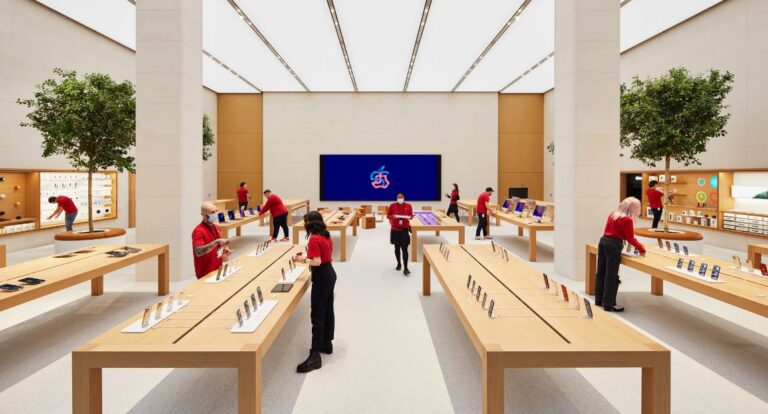
In general, iOS devices tend to have better retail support than Android devices, no doubt. One reason for this is that Apple has a strong retail presence, with a network of over 500 Apple Stores in various locations around the world. These stores provide a variety of services, including technical support, repairs, and training. This means that users of iOS devices can easily access support and assistance from Apple directly if they have any issues with their devices.
Android devices, on the other hand, do not have a dedicated retail presence. Instead, users of Android devices may have to rely on the support provided by the device’s manufacturer or go to a third-party retailer for assistance. Now if the device is of brands like Samsung or MI or Vivo, then it is rather easy compared to brands like Huawei or Honor, or OnePlus that has fewer offline centers. This can make it more difficult for users of Android devices to access support and assistance if they have any issues with their devices.
Another reason why iOS devices may have better retail support is that Apple has a reputation for providing high-quality customer service. Apple’s retail staff are known for their expertise and knowledge of Apple products and are trained to provide assistance and support to customers.
Android devices, on the other hand, may not have the same level of retail support, as the quality of customer service can vary depending on the manufacturer and the retailer. This can make it more difficult for users of Android devices to get the support and assistance they need if they have any issues with their devices.
Overall, iOS devices tend to have better retail support, thanks to Apple’s strong retail presence and reputation for providing high-quality customer service. Android devices, on the other hand, may not have the same level of retail support, depending on the manufacturer and retailer.
Point: iOS
Charging and Battery Life

One big difference between Android and iOS is the charging technology used by iOS and Android devices. Most iOS devices, such as the iPhone and iPad, use a charging technology called Lightning. This technology uses a small, reversible connector to connect the device to a power source, and is known for its fast charging speeds.
Android devices, on the other hand, use a variety of charging technologies, including USB-C, micro-USB, and the older USB-A. These technologies use different connectors to connect the device to a power source, and the charging speed can vary depending on the specific technology and device.
Type C of Android is better than lightning cable in all ways. It is way faster, universal, and can be used in other electronic devices too. The battery life of Android phones is already better than iPhones. As we are moving towards a Universal charger, Apple will have to now compromise and switch to USB-C type (confirmed by Apple’s Vice President). These changes will come to effect maybe till iPhone 15 or 16. Where Lightning charger can only be used by iOS devices such as iPhone and iPad, USB-C can be used on a variety of devices, including smartphones, tablets, laptops, and other electronic devices. This means that users of USB-C devices have a wider range of charging options available to them.
Overall, the charging technology used by a device running iOS or Android is an important factor to consider when choosing between the two. iOS devices use Lightning technology, while Android devices can use USB-C. The specific charging technology and its capabilities can affect the device’s charging speed and compatibility with other devices and accessories. While we can see that USB-C has more future possibilities as many phones can charge with up to 210W chargers or phones get fully charged in 18 minutes which is amazing.
Check out the video of Youtuber Mrwhosetheboss to compare the battery of top smartphones in the market.
Point: Android
Camera Perfomence
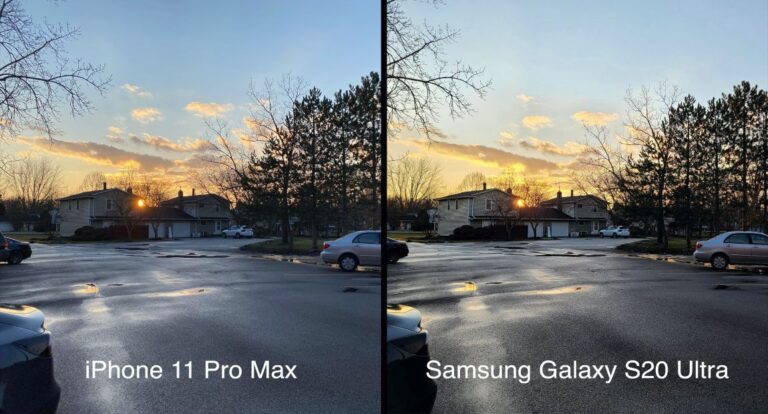
When it comes to the camera, both iOS and Android offer a wide range of options to choose from. However, there are some key differences between the two operating systems that may make one a better choice for certain users.
One of the main advantages of iOS is the consistency of its camera experience. Because all iPhones use the same camera hardware and software, users can expect a similar level of performance and quality from any iPhone model. This makes it easy to switch between different iPhone models or upgrade to a newer one without worrying about a significant change in camera quality. One of the key advantages of the iPhone’s camera is its advanced image processing technology, which allows for better dynamic range, improved low-light performance, and more accurate colors. Additionally, the iPhone’s camera app is user-friendly and offers a wide range of features and settings, including manual controls for more advanced users.
Android, on the other hand, offers more choices in terms of camera hardware and software. This means that the camera experience can vary greatly between different Android devices. Some high-end Android phones have cameras that are on par with the iPhone, while cheaper Android devices may have lower-quality cameras.
So which camera is better? This is not possible to answer here as some android phones have a better camera in some fields. There are no phones out there that have a perfect camera as innovation results in imperfection. All I mean is some cameras are superior in portrait while some are in zoom. We can’t compare them but that does not mean one is not a good camera phone.
I would say that if you are not into tech much and just want a good camera phone without making the brain work, iPhone will never disappoint you but of course, you pay a good amount for it. If you have any specific need, then you might have to search between iPhones and many other Android phones. You can check out this article on expertphotography.com for more views on camera differences.
Point: iOS
Here is the list of best camera phones of 2020.
Configuration
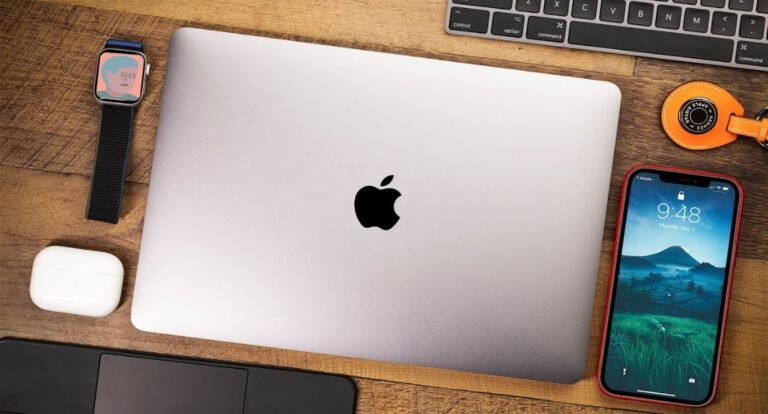
When it comes to configuration with other devices, iOS has a clear advantage over Android. This is because Apple has a well-established ecosystem of devices, including the iPhone, iPad, and Mac, which all work seamlessly together. This allows users to easily share files and information between their devices and makes it easy to switch between different devices.
In contrast, Android has a more fragmented ecosystem, with many different manufacturers creating a wide range of devices that may not always work well together. This can make it more difficult for Android users to connect their devices and share information, as there is not always a consistent and reliable way to do so.
Apple devices offer some special functions like Airdrop and Continuity cameras that are just out of the world. For professionals using mac and iPhone, this is a boon. Imagine using your PC browser and then continuing the browsing on your mobile. It feels like your PC and phone are one device. That is not possible for Android as there are many manufacturers and it creates issues of compatibility.
But every coin has two sides. As easy iPhone connects to Mac, it is harder than that to connect it to Windows. I mean not connecting but transferring and working in Windows and iOS is like a nightmare. So if the configuration is an issue, choose iOS only if you can afford all Apple Devices or better prefer an Android phone.
Overall, both iOS and Android have their strengths and weaknesses when it comes to configuration with other devices. It ultimately comes down to personal preference and what a user is looking for in a mobile operating system but if you are a professional and can afford the iOS ecosystem, work becomes a lot easy.
SO Final Verdict: Is android better? or is iPhone better?
It’s finally time for people to understand what they need in a phone. You should not buy a phone without thinking about your requirements. If I go on data, there are 3 billion android users and 1 billion iOS users. This is simply because Apple is just one company, while Android is more of an Open source. This data shows that none is bad as you can’t say something bad when billions of people are using them, it’s more about what you want.
If you are not tech-savvy, here are the conditions to know, when you need an iPhone:
You are already an iPhone user (switching is the worst)
You are rich and don’t want to waste your precious time. Coz then you can easily afford an iPhone and its services like iCloud etc.
If you are a professional and want to secure your phone and don’t want to get distracted by anything
If you have or are planning to set up an Apple ecosystem like Mac or iPad.
In case you have a passion for photography, go for a Pro version
For students, who get older and not Pro, like right now, iPhone 12 would be the best if you want an iPhone so bad.
Now all those remains, please remember, most iPhones are sold for the sole purpose of a show-off. So please don’t waste your hard-earned money like that, instead what you have to do is first set your budget. This is common sense that if you want to buy anything, you should know how much to spend. Then make a list of all the requirements or features you would prefer and number them according to importance. Now you know what are you looking for and in what range. Now start browsing and it won’t take more than an hour for you to decide which phone you need. Here are some useful links for the best camera phones or for the list of the best phone of 2022 click here or if you are on a tight budget, then you may wanna click here for the best budget phones.
If my article helped, please tell me in the comments, thanks.

